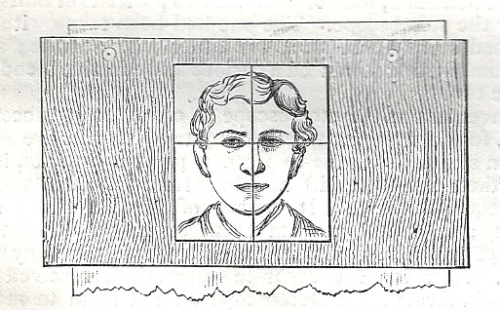Francis Galton, "Composite Portraits" (Nature, May 23, 1878) with several text illustrations. Detached from a larger bound volume, but accompanied by its original wrappers (totaling 11pp of ads). Very Good condition. $300

Francis Galton's work came early on in the prehistory of cognitive and computational aspects of face recognition, though more like an analog development in a later digital environment. In this paper he discusses his attempts to see the face of criminality before crime was committed. Galton uses a collection of photographs of criminals convicted of murder, manslaughter, and crimes of violence, creating amalgams of portraits, and stating that the "special irregularities" of each individual criminal face "disappeared and the common humanity that underlies them prevailed", and so the images represent not the criminal "but the man who is likely to fall into crime".
Galton (1822-1911), who was similar to Alphonse Bertillon who came somewhat after him, was working on a predictive manner of crime detection, with Bertillon (1853-1914) using body measurements and Galton facial characteristics. Both made significant contributions to police and forensic science, Galton doing groundbreaking work in fingerprints (1869) which proved a definitive means for identifying criminals once they had entered a justice system, and Bertillon in numerous other areas (including galvaniplastic molds for footprints and such, ballistics, and a number of different aspects of crime detection.
See for long background: George Pavlich, “The Subject of Criminal Identification”, in Punishment and Society, Vol 11 (2), 171-190. There are many articles referencing this early work by Galton.



Comments